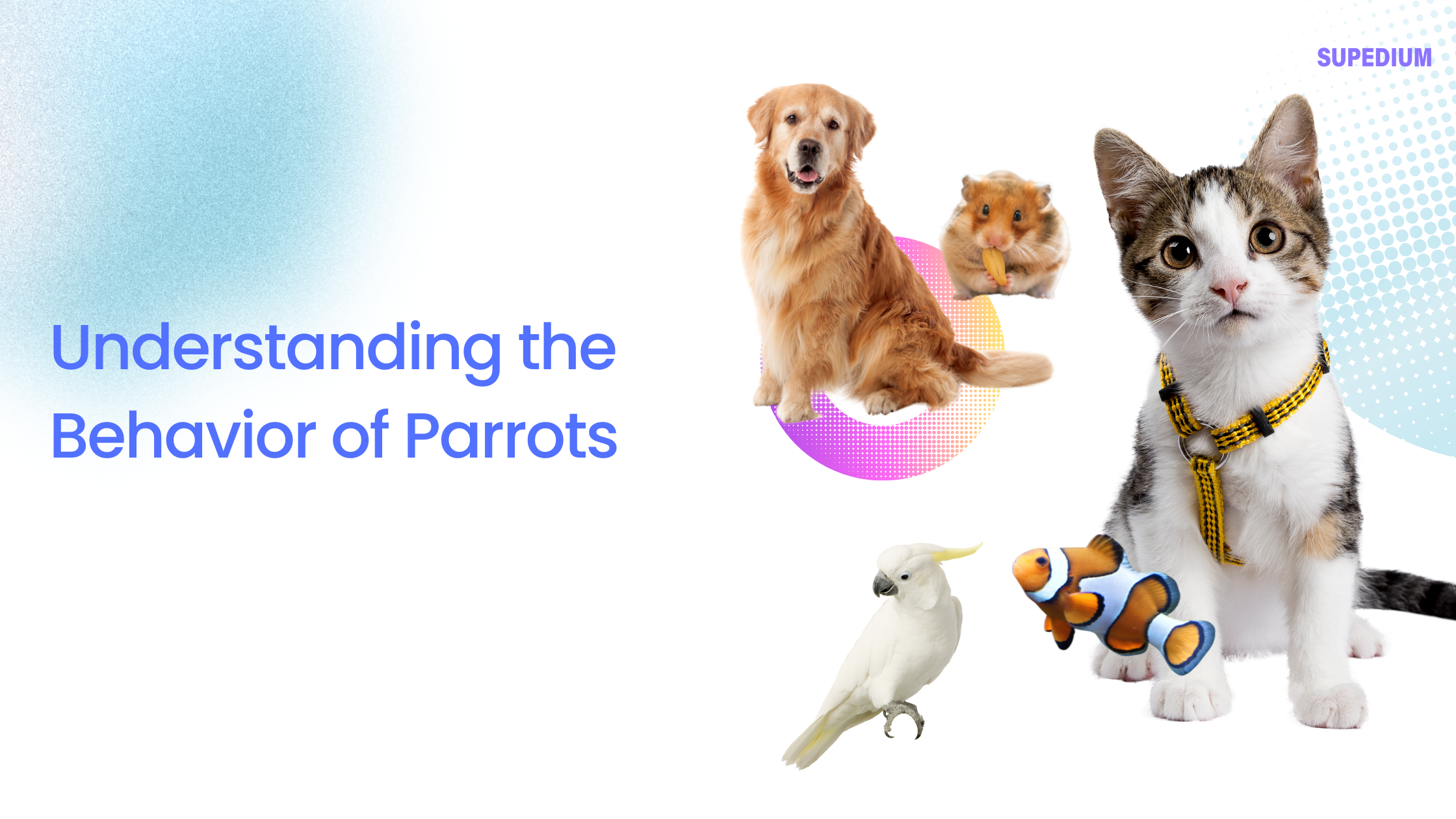Table of Contents
![]()
Introduction
Parrots are among the most captivating and intelligent birds in the avian world. Their vibrant plumage, complex vocalizations, and social behaviors make them fascinating subjects of study. Understanding parrot behavior not only enriches our relationships with these remarkable birds but also enhances their care and supports conservation efforts. This article delves into the behavior of parrots, exploring their natural behaviors, how they adapt to captivity, and the challenges faced in both environments.
Natural Behavior and Habitat
Social Structure
In the wild, parrots are highly social creatures that live in flocks. These flocks are structured with a clear hierarchy and exhibit intricate social dynamics. Parrots communicate extensively within their groups using a variety of vocalizations, such as squawks, calls, and even mimicking sounds from their environment. Pair bonding and mating rituals are also central to their social structure, with many species forming long-term monogamous pairs.
Foraging and Feeding
Parrots have evolved to be skilled foragers, utilizing their strong beaks and dexterous feet to access a diverse diet. In their natural habitats, which range from rainforests to savannahs, they forage for seeds, fruits, nuts, and occasionally small insects. Their ability to problem-solve during foraging is a testament to their cognitive abilities. The diet of a parrot plays a crucial role in shaping its behavior, as nutritional deficiencies can lead to health issues and behavioral problems.
Nesting and Reproduction
Parrots’ nesting behaviors are as varied as their diets. They may nest in tree cavities, cliffs, or even in man-made structures. During breeding season, parrots engage in elaborate courtship displays and rituals. Parental care is intensive, with both parents involved in incubating eggs and feeding chicks. The success of their breeding efforts often depends on environmental conditions and the availability of suitable nesting sites.
Behavioral Characteristics of Parrots
Communication
Parrots are renowned for their vocal abilities, which include a wide range of calls and the ability to mimic human speech. Vocalizations serve multiple purposes, such as signaling danger, attracting mates, or maintaining flock cohesion. Body language is equally important; feather positions, head bobbing, and other postures convey emotions and intentions. Understanding these signals is crucial for interpreting a parrot’s state of mind and needs.
Cognitive Abilities
Parrots are among the most intelligent of bird species. Their problem-solving skills are demonstrated through their use of tools and ability to navigate complex tasks. Studies have shown that parrots possess remarkable memory and learning capabilities, enabling them to understand and interact with their environment in sophisticated ways. Their emotional intelligence also plays a role in their social interactions and bonding with humans.
Play and Enrichment
Play is a vital aspect of a parrot’s development and well-being. In the wild, parrots engage in various playful activities, including manipulating objects and interacting with other flock members. In captivity, providing appropriate toys and enrichment activities is essential for their mental and physical health. Observing a parrot’s play behavior can offer insights into its emotional state and overall well-being.
Parrot Behavior in Captivity
Adjustment to New Environments
When introduced to captivity, parrots often experience stress as they adjust to new surroundings. Common behavioral issues include aggression, fearfulness, and vocalization problems. Understanding and addressing these issues requires patience and a thorough knowledge of the parrot’s needs and preferences.
Socialization and Bonding with Humans
Building a positive relationship with a parrot involves consistent and gentle interaction. Training methods should be based on positive reinforcement, and regular socialization helps to strengthen the bond between the parrot and its human caregivers. Recognizing and addressing behavioral problems early on is crucial for maintaining a harmonious relationship.
Environmental Enrichment
A stimulating environment is essential for a captive parrot’s well-being. This includes providing a variety of toys, opportunities for social interaction, and a dynamic living space. Regular changes to the environment can prevent boredom and encourage natural behaviors, such as foraging and exploration.
Behavioral Problems and Solutions
Common Issues
Behavioral problems in parrots can manifest as excessive screaming, feather plucking, or aggression. These issues often stem from factors such as boredom, stress, or health problems. Identifying the root cause of these behaviors is key to finding effective solutions.
Identifying Causes
Behavioral issues can be influenced by environmental conditions, social interactions, and health factors. For example, a parrot that is isolated or lacks stimulation may resort to feather plucking. Similarly, aggression can be a sign of territoriality or fear. A thorough assessment is needed to address the underlying causes of these behaviors.
Intervention Strategies
Addressing behavioral problems involves a combination of behavioral modification techniques, environmental adjustments, and, when necessary, professional help. Creating a more engaging environment, implementing consistent training routines, and seeking veterinary advice can help resolve many issues.
Conservation and Ethical Considerations
Impact of the Pet Trade on Wild Populations
The pet trade has had significant impacts on wild parrot populations, contributing to habitat destruction and overexploitation. Many species are threatened by illegal trapping and trade, highlighting the need for conservation efforts and responsible ownership practices.
Ethical Treatment of Pet Parrots
Ensuring the ethical treatment of pet parrots involves providing proper care, social interaction, and a stimulating environment. Avoiding common pitfalls in parrot ownership, such as neglecting their social and psychological needs, is crucial for their well-being.
Role of Education and Advocacy
Educating the public about parrot welfare and supporting conservation initiatives are vital for the protection of both wild and captive parrots. Advocacy efforts can help raise awareness and promote responsible practices in parrot care and conservation.
Conclusion
Understanding parrot behavior is essential for fostering healthy relationships between humans and these extraordinary birds. By studying their natural behaviors, adapting to captivity, and addressing behavioral problems, we can enhance their well-being and support conservation efforts. Continued research and education will ensure that both wild and captive parrots receive the care and respect they deserve.
Share This





Be the first to comment